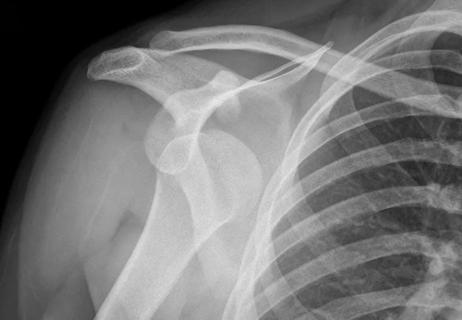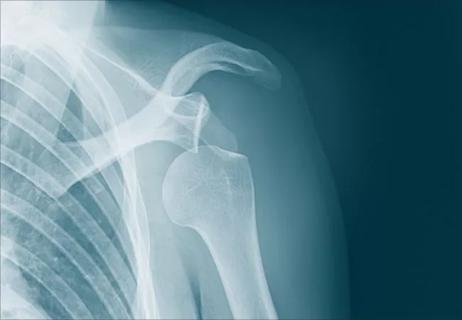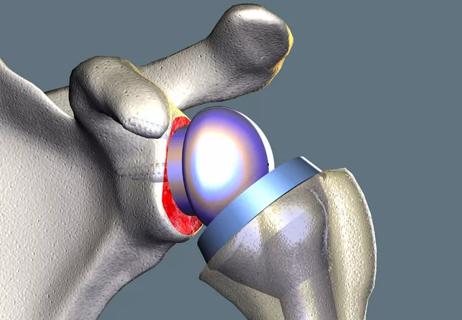Don’t ignore obvious warning signs of more serious shoulder issues

Shoulder pain, stiffness or weakness can make it difficult to carry out everyday tasks, like reaching for something on a high shelf, driving a car or even brushing your hair.
Advertisement
Cleveland Clinic is a non-profit academic medical center. Advertising on our site helps support our mission. We do not endorse non-Cleveland Clinic products or services. Policy
Figuring out what’s wrong with your aching shoulder is the first step toward making it better. Unfortunately, there’s a hefty list of potential causes. (Your shoulder is a pretty complicated joint, after all.)
To break down your potential shoulder breakdown, let’s turn to orthopaedic surgeon Mark Schickendantz, MD.
If you have a problem with your shoulder, the much-used joint isn’t exactly shy about sharing the news. But where’s the line between general aches and an injury that might deserve medical attention?
Here are symptoms that often serve as warning signs of a shoulder injury:
So, what might be causing all this pain in your shoulder? Here are 11 possible reasons for your sudden discomfort.
Your rotator cuff often gets talked about like it’s just one thing. In reality, though, it’s a collection of four small muscles and a network of tendons that work together to help you lift and move your arms.
Advertisement
These muscles and tendons work to keep the ball of your upper arm bone in your shoulder socket. It’s a tough job, with inevitable wear and tear, which can lead to:
This injury is exactly what it sounds like. It’s a tear — either partial or full — of a rotator cuff tendon connected to your arm bone.
Your tendon can tear from a single event, like falling down on an outstretched arm. It also may deteriorate slowly over time due to a repeated motion. (For example, a plumber who frequently raises their arms overhead can develop a rotator cuff tear.)
If you experience shoulder pain at night that makes it difficult to fall asleep or jolts you awake, you may have a tear in one or more of your rotator cuff tendons. “Night pain is the hallmark of a rotator cuff tear,” Dr. Schickendantz says.
You also may have this type of injury if you feel pain when lifting your arm overhead (like when brushing your hair) or weakness in your shoulder when trying to lift anything above shoulder level.
Initial treatment typically involves relative rest, application of ice and sometimes the use of over-the-counter (OTC) nonsteroidal anti-inflammatory drugs (NSAIDs). Physical therapy is also frequently prescribed.
Rotator cuff tendonitis happens when tendons in your joint become inflamed and irritated. The pain usually hits on the front and side of your shoulder. You might also feel a little stiffness.
“This condition can occur with activities that involve using your arms overhead, like tennis, yoga or painting a room,” Dr. Schickendantz says. “Often the pain will be worse at rest and improve with activity.”
Treatment typically involves rest, applying ice and taking NSAIDS. Most people recover from tendonitis within a few weeks.
Small sacs of fluid called bursae hold an important job in your shoulder. They provide lubrication and act as cushions to reduce rubbing and friction as your muscles, tendons and bones move around.
Overuse of your shoulder or keeping your joint in an awkward position can aggravate the bursae, leading to the swelling and inflammation that defines bursitis.
The injury often occurs in tandem with tendonitis, with a similar pain and treatment approach. (Lower your chances of dealing with bursitis by using these life tips, stretches and exercises recommended by a physical therapist.)
If one of the above rotator cuff issues lands on your medical chart, a condition called shoulder impingement syndrome may follow.
Advertisement
Swelling from a rotator cuff injury can lead to lead to rubbing or even a “pinch” of your muscles and tendons threading through the tight space. This impingement can cause considerable discomfort.
Symptoms typically calm down over weeks to months with physical therapy, rest, ice and NSAIDs.
There’s a formal name — adhesive capsulitis — for the painful condition where your shoulder becomes stiff and can’t move. Most people, though, know it by a more descriptive moniker: frozen shoulder.
The condition occurs when the connective tissue in your shoulder’s ball-and-socket joint thickens and stiffens. This makes it difficult to move your arm without a whole lot of pain. The less you move your arm, the more the problem grows.
Eventually, your shoulder feels frozen in place. (Hence, the name.)
While some people develop adhesive capsulitis following an injury, many who’re diagnosed with frozen shoulder cannot recall an injury. It’s also seen more frequently in people with diabetes, Parkinson’s disease and a few other conditions for reasons that aren’t quite clear.
Frozen shoulder can take several months to resolve, even with aggressive treatment. Exercises and stretches that target range of motion in your shoulder also can be useful to keep symptoms at bay.
Advertisement
The onset of stiffness in your shoulder following a period of immobilization, such as using a sling to protect your arm after a fracture, is a different condition than a true frozen shoulder. Post-injury stiffness typically responds quite quickly to physical therapy.
Another worry with your shoulder? Something called calcific tendonitis.
This condition — which is less common — develops when calcium deposits build up within tendons running through your shoulder. The bigger these deposits grow, the more irritation and pain they cause.
Calcific tendonitis can arise in the face of chronic tendonitis of the rotator cuff. The deposits can typically be seen on X-rays. Treatment usually centers on physical therapy, NSAIDs and steroid injections.
A deep ache in the back of your shoulder may be a sign of osteoarthritis. This pain follows the deterioration of cartilage, the cushioning material that covers the ends of your bones.
As osteoarthritis worsens, stiffness in your shoulder develops to the point where you might lose the ability to reach behind your back. “Patients often say they are unable to scratch their back or thread a belt,” Dr. Schickendantz notes.
Osteoarthritis symptoms develop over time. For some people, a shoulder injury from sports or some other activity may kick off a degenerative process that eventually results in osteoarthritis.
Advertisement
But many people have no specific cause — it’s just wear and tear over time.
Treatment for osteoarthritis of the shoulder is similar to treatment for a rotator cuff tear. If the condition is severe, you can undergo shoulder joint replacement surgery, which is similar to joint replacement for hips and knees.
While osteoarthritis may be the most common form of shoulder arthritis, there are a few more types that can bring pain. The list includes:
Shoulder pain is not uncommon. Given that many injuries above are related to general wear and tear, it’s easy to see why. The joint takes a beating in daily life. That’s just a reality.
But when that pain begins to affect basic activities — such as reaching up to wash your hair — it’s time to get your shoulder checked. A combination of physical therapy, rest and other at-home remedies can often resolve the problem.
“Solutions are available,” says Dr. Schickendantz. “It’s often just a matter of correctly identifying the problem.”
Learn more about our editorial process.
Advertisement

Stretching and eliminating stresses on the joint is key to stopping the pain

Sometimes, it does require surgery

The short answer from an orthopaedic surgeon

A chiropractor offers guidance and simple exercises

How to tell the difference

An orthopaedic surgeon outlines the alternatives

Most recommended precautions center around minimizing bruising or swelling

Type 2 diabetes isn’t inevitable with these dietary changes

Applying a hot or cold compress can help with pain